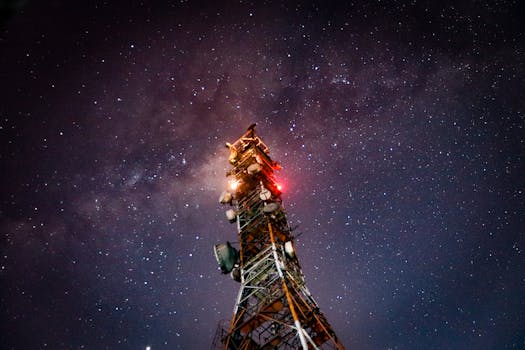
LEO Satellites: Revolutionizing Global Connectivity with Low Earth Orbit Technology
LEO satellites, or Low Earth Orbit satellites, are a type of satellite that operates at an altitude of around 160 to 2,000 kilometers above the Earth’s surface. This is significantly lower than traditional geostationary satellites, which orbit at an altitude of around 36,000 kilometers. The lower altitude of LEO satellites provides several advantages, including faster data transfer rates, lower latency, and improved signal strength.
The use of LEO satellites is becoming increasingly popular, with many companies and organizations launching their own constellations of satellites to provide global connectivity and other services. One of the most well-known examples is SpaceX’s Starlink constellation, which aims to provide high-speed internet access to remote and underserved communities around the world. Other companies, such as OneWeb and Amazon’s Kuiper Systems, are also launching their own LEO satellite constellations to provide a range of services, including broadband internet, navigation, and Earth observation.
The Benefits of LEO Satellites
LEO satellites offer several benefits over traditional satellite technology. One of the main advantages is their lower latency, which is the time it takes for data to travel from the Earth to the satellite and back again. This is because LEO satellites are closer to the Earth, reducing the distance that data has to travel and resulting in faster data transfer rates. This makes LEO satellites ideal for applications that require real-time communication, such as video conferencing, online gaming, and remote healthcare.
Another benefit of LEO satellites is their improved signal strength. Because they are closer to the Earth, LEO satellites require less power to transmit signals, resulting in a stronger and more reliable connection. This is particularly important for applications that require high-speed data transfer, such as broadband internet and video streaming.
Applications of LEO Satellites
LEO satellites have a wide range of applications, from providing broadband internet access to remote and underserved communities to supporting critical infrastructure such as navigation and emergency response systems. They can also be used for Earth observation, providing high-resolution images of the Earth’s surface and monitoring environmental changes such as deforestation and climate change.
In addition to these applications, LEO satellites are also being used for scientific research, such as studying the Earth’s atmosphere and monitoring space weather. They can also be used for military and defense applications, such as providing secure communication networks and supporting reconnaissance and surveillance missions.
The Future of LEO Satellites
The use of LEO satellites is expected to continue to grow in the coming years, with many companies and organizations planning to launch their own constellations of satellites. This will provide a range of benefits, from improved global connectivity to enhanced Earth observation and scientific research capabilities.
However, the growth of LEO satellites also raises several challenges, such as the need for sustainable and responsible management of the increasing number of satellites in orbit. This will require international cooperation and the development of new regulations and standards to ensure the long-term sustainability of the space environment.




